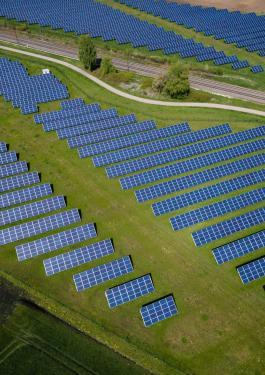Circular Economy
Sustainability is at a turning point, as governments and businesses seek ways to combat climate change and the severity of plastic waste in food chains and oceans.
For years, businesses have focused on managing environmental impacts: today, they are looking to go beyond that to meet future regulatory requirements and exceed customer expectations.
For many, this means moving towards a circular economy - a regenerative business model in which resources are continuously reused and recycled.
WHAT IS THE
CIRCULAR ECONOMY?
By 2030, the planet will be home to nearly 9 billion people. Resource scarcity, urbanization, pollution, rising energy costs and water insecurity are among the many challenges that will arise from this rapid population growth. In the face of these challenges, our “take-make-waste” industrial model has become unviable, and a new paradigm is emerging: the circular economy.
The circular economy is an economic framework that focuses on carefully managing resources so nothing is wasted. In other words, products and materials are kept in use—reused, remanufactured and recycled continuously—for as long as possible to achieve maximum value. This restorative and regenerative approach aims to create a closed-loop supply chain that “designs out” waste. Because the circular economy maximizes economic, natural and social capital, it is considered a valuable tool for empowering businesses, helping them successfully tackle environmental priorities, drive performance and stimulate economic growth.
Experts agree that reducing the negative impacts of the “take-make-waste” industrial model is not enough to achieve a circular economy. Transitioning to the circular economy model demands understanding and control of all materials and processes used in production. In order to be credible, each of processes of products must be defined, implemented, audited and verified.
HOW CAN STANDARDS AND AUDITING SUPPORT THE TRANSITION
TO A CIRCULAR ECONOMY BUSINESS MODEL?
Companies may find it daunting to transition to a circular economy business model because of the sheer number of processes and volume of materials involved in production. As a global leader in environmental and sustainability certification, Bureau Veritas is now supporting organizations of all sizes; we talk through four key steps, and explain how auditing and certification provide a pragmatic way to implement a circular economy business model.
Bureau Veritas Circular+
The circular economy is a new model for business, powered by renewable energies, in which waste becomes a material flow to be reused or recycled, where value is preserved at its highest level and business activity contributes to the self-regenerating systems of the biosphere.



